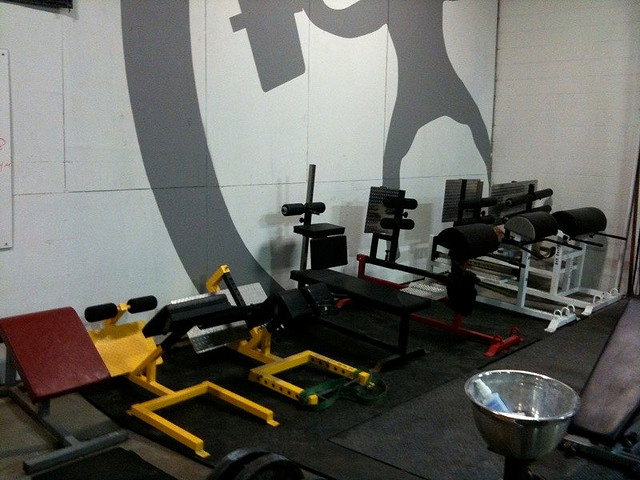
We get asked all the time what the difference between an accessory lift and a supplemental lift. After doing some research, I came up with the following ideas. I got these from “A System of Multi-Year Training in Weightlifting” by A.S. Medvedyev. To make things easier here are some basic definitions;
Supplemental Lift – These movements are more closely related to the squat, bench and deadlift in their performance. They are very similar to the three movements with respect to their execution and form. These movements are more joint and movement oriented; not muscle. For example, a 5” rack lockout would be more movement-related to a bench press than a triceps extension. These movements are usually done with heavier weights and lower volume. These exercises are done earlier in the workout to maximize their potential. Supplemental lifts should be recorded and monitored.
For the bench press, most of the supplemental work is done for the lockout but any typical max effort exercises can be used. These can include floor presses, board presses, inclines and reverse band presses.
For the deadlift, rack lockouts, pulls off mats, ultra-wide deadlifts and Zercher squats are done.
For the squat, high box squats, low box squats, Zercher squats, wide stance squats, narrow stance squats are good choices.
Accessory Lifts – These movements create a localized affect and are more muscle oriented. These are usually done with smaller amounts of weight and higher volume. These exercises are usually done towards the latter half of the workout as they do not require tremendous physical or mental exertion. Many times these exercises are used to strengthen tendons and ligaments as well as adding needed muscle mass. For the squat, bench and deadlift, there are a ton of different exercises. Basically anything that doesn’t fall into the supplemental category.
Accessory lifts are sometimes recorded and monitored but there is not a lot of emphasis on breaking records. There is also not a lot of physical and mental exertion when doing these lifts. Save your mental psyche when doing your main lifts and your supplemental lifts. Even though there is less emphasis on the accessory exercises, be sure that you are picking quality exercises and one’s that have a purpose. Choosing the wrong exercises for your training goals and doing an exercise “just to do something” is a great way to overtrain. Often people ignore the volume on these exercises and forget that they can lead to overtraining if not careful. You should be able to justify everything you do in the weight room.
It should be noted that some lifts seem to fall into both categories. A good example would be dumbbell bench presses. While it mimics the movement of the bench press, going for a heavy double or triple on this exercise isn’t recommended. So this movement would fall into the category of accessory rather than supplemental.
To simplify even more, supplemental lifts are “powerlifting” oriented while accessory lifts are “bodybuilding” in nature. This is a rather crude interpretation but may help you in classifying them. Another way to look at it – Supplemental lifts would be things that you could (but not always) work up to a 1RM; accessory lifts would be exercises that you wouldn’t. Now I know that there are some people that want to max out on an extension or face pull or lat pulldown – to those of you that think that this is a good idea, happy trails.








